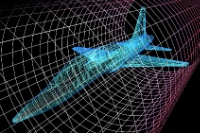
Who is working in engineering fields?
- Notes:
- Includes both full-time and part-time workers.
- Aerospace includes aeronautical and astronautical; civil includes architectural and sanitary; electrical includes computer hardware; materials includes metallurgical.
- Notes:
- Includes full-time and part-time workers. For reasons of confidentiality and/or reliability, the small numbers of American Indian/Alaska Natives, Native Hawaiian/Pacific Islanders, and those of more than one race are not shown.
- Aerospace includes aeronautical and astronautical; civil includes architectural and sanitary: electrical includes computer hardware; materials includes metallurgical.
In 2010, women comprised 13% of the 1,569,000 workers employed in engineering. The largest engineering subfields for both men and women were electrical, mechanical, and civil engineering.
Of the 1,569,000 workers employed in engineering in 2010, 1,123,000 were white, 262,000 were Asian, 56,000 were black, and 99,000 were Hispanic.
Key Observations
- Relative to their overall 13% share of engineering workers, women had above average shares in the subfields of chemical (19%) and industrial (18%) engineering.
- While mechanical engineering ranked third in the number of female workers (22,000), it had the smallest proportion of females (7%).
- In 2010, 99,000 Hispanics were working in engineering, 6% of engineers overall. Electrical engineering was the largest subfield for Hispanics (20,000). Between 8% and 9% of aerospace, industrial, and civil engineers were Hispanic, slightly higher percentages than for engineering overall.
- More than one fourth of electrical (26%) and materials (28%) engineers were Asian, compared to 17% of engineers overall.
- Blacks comprised 4% of engineers overall (56,000) and between 3% and 4% of those in each major subfield.









 @NSF_NSB
@NSF_NSB NSB
NSB
